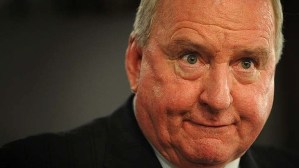Sack Alan Jones: Reflections on the social media campaign
December 13, 2012 Leave a comment
Yesterday the organisers of the ‘Sack Alan Jones’ campaign formally closed the social media campaign against the polarizing broadcaster and declared the campaign to be a success.
Regardless of your opinion of Alan Jones and his comments (which have been labeled defamatory, racist, misogynistic and riot-inciting), reflecting on this social media campaign to oust him is an opportunity to observe how effective semi-organised social media campaigns are at achieving their self-stated aims and at driving change more broadly.
The Sack Alan Jones campaign started following a much publicized comment the broadcaster made at a Young Liberals fundraising event, suggesting that Julia Gillard’s late father died of shame caused by the perceived performance of his daughter’s performance as Australia’s Prime Minister.
Once they were widely reported a few days later, Jones’ vitriolic comments we replayed ad nauseam and everyone was given the opportunity to publicly comment, with fellow journalists, politicians, business leaders and everyday citizens weighing on Jones’ choice words in the public sphere.
Running parallel, there was similar heated commentary on social media – mostly negative and often hostile. This sentiment was what the ‘Sack Alan Jones’ campaign hoped to harness and translate into action against the broadcaster. The campaign attracted over 21,000 likes on Facebook, countless tweets were made with the hashtag #SackAlanJones and the cause gained the support of like-minded organisations such as Change.org.
The social media campaign was also reported in television and print media, with journalists from many organizations reporting on the activity of the social media campaign.
However, for all the social media activity, what has the campaign actually achieved?
Well firstly, Alan Jones is still on the air, broadcasting his opinions in his regular breakfast-morning time slot In terms of the all-important ratings, Jones seems to be more popular than ever. The Australian recently reported that Jones increased his audience share since his much publicized comments September 30. His 2GB breakfast show was the clear winner in its Sydney time slot across AM and FM networks with an 18.2 per cent share (a 0.9 increase since the last survey period).
At the height of the negative publicity, a number of advertisers withdrew their support (in terms of adverting spend) for Jones via his talk show. Recent estimates put this short-term profit loss at between 1 – 1.5 million dollars and 15 advertisers have vowed “never to return”.
Was this driven by the social media campaign? It is unclear. Likely the social media had some influence, but it was highly unlikely the sole factor which companies based this decision on.
What’s more, this loss in advertising revenue is a relatively minor figure given the amount and frequency of advertising spend on the Jones show. Moreover, it is likely that many advertisers made a big deal in claiming the ‘moral high ground’ through pulling out, but will inconspicuously return to the program as the negative attention decreases). In fact, the station’s chairman told the Sydney Morning Herald that: “We are confident that in the second half of the year there will be minimal, if any, residual impact”. Hardly the claim of a man concerned about the image of Jones and his ability to drive revenue for the station.
The social media backlash against Jones largely did not come from his faithful target audience. It came from a tech-savvy, and presumably more progressive, audience who have likely never tuned into his morning talk-back program. They likely have never respected his views or given them credence. They were probably the same people who despised his comments surrounding the Cronulla riots and the Kovco tragedy, as well as his various anti-climate change and racially charged comments. These people have long-despised Jones and this social media campaign simply gave them another avenue to voice their displeasure. In effect, they were using social media to talk among themselves, and in the process attract some fleeting attention from more traditional media.
It would seem as the Sack Alan Jones campaign was only successful in mobilizing a section of people who already disliked him to speak out and encouraging them dislike him even more. It would seem that the campaign failed to “crush Jones’ powerful and invincible image”, particularly in regard to his loyal base of listeners which has seemingly grown in number.
This makes the organisers’ claims of “stripping him of his influence” and “severely limiting, his capacity to damage the Australian community” seem a little over confident. If anything, it may have made him more of a martyr, thereby increasing his appeal among his already loyal target audience through fostering oppositional loyalty – Jones did, and continues, to receive many supportive phone calls from his loyal listeners, praising his opinions and observations.
Although the ‘Sack Alan Jones’ social media campaign attracted a lot of support and activity, it terms of action it seems not to have been successful as its organisers think.
// Alec Schumann



